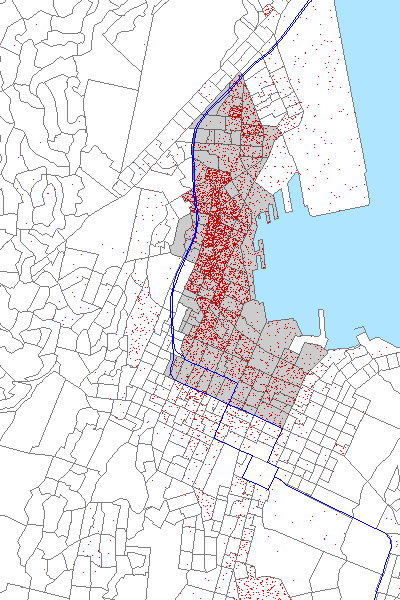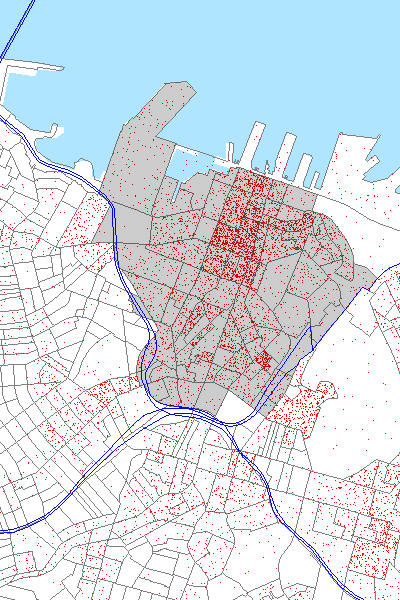Bigger than Auckland!
In my round-up post last week, I claimed that much of Wellington's liveliness is due to its compactness, and specifically because despite being a much smaller metropolis, "its CBD has more workers than Auckland's". "Flyin' Higher" (from the Skyscraper City forum) quite rightly challenged me on this, since it sounds quite extraordinary.
My claim was based partly upon a paragraph in Wikipedia that says "More than most cities, life in Wellington is dominated by its central business district. Approximately 62,000 people work in the Wellington CBD, only 4,000 fewer than work in Auckland's CBD, despite that city having three times Wellington's population." That places us just short, but then there was a recent report quoted by the anti-Harbour Quays group stating that our CBD currently has 14% more office floor area than Auckland's. Neither source gives an unambiguous definition of "CBD", so it's hard to tell whether we're comparing equivalent part of the cities.
So, it's time for me to get stuck into the Census data (2001, unfortunately), and try to come up with my own explicit definition of "the CBD" for both cities. In both cases, I've been fairly generous (Te Aro is not always counted as "CBD", but a lot of people work there), and in the end it's all rather arbitrary. Here are the maps, showing meshblock boundaries, state highways, workers (1 red dot for 10 workers) and my CBD definitions (grey shading). "Workers" includes all people with a workplace in that area, including retail, manufacturing, and hospitality as well as us office drones.
For Wellington, I've included most of the Thorndon office district, but not Thorndon Quay or the port. I've generally stayed within a couple of blocks of the Golden Mile, so I've excluded Te Aro south of Vivian St.

For Auckland, I stayed within the motorways. There are concentrations of workers along K Rd (no jokes about what sort of "workers" they'd be, please!), just west of Victoria Park, and around the hospital, but I didn't think these really counted as the "CBD". I included the Viaduct but not the downtown wharves, since the meshblock for them also includes the working port to the east.

Immediately you can see that even Queen St lacks the density of Lambton Quay, and that the workers are generally more spread out within the CBD. But to answer the question, we'll need to look at the numbers:
| Wellington | Auckland | |
|---|---|---|
| workers | 53,097 | 50,151 |
| area | 175ha | 304ha |
| workers/ha | 303 | 165 |
So, not only does downtown Wellington have more workers than downtown Auckland, it accommodates them at nearly twice the density! And our bars are even more compact. Of course, both cities have changed since the 2001 Census, and while we have preliminary residential data from 2006 already, workplace data won't be available until at least November, so we'll have to wait to see whether the comparison still holds.



2 Comments:
Interesting comparison Tom, it certainlly shows the impact of the Government on the office space and worker population of Wellington's CBD, as well as the compacting effect of Wellington's CBD geography comapred to Auckland. It will be interesting to see how these figures have changed for the 2006 census.
I was in Wellington recently and I thought it was awesome. It was very compact, I felt the Cbd was like a mini Sydney or Brisbane. Are there plans to expand Wellington's cbd or build an underground rail network?
Edwin.
Post a Comment
<< Home